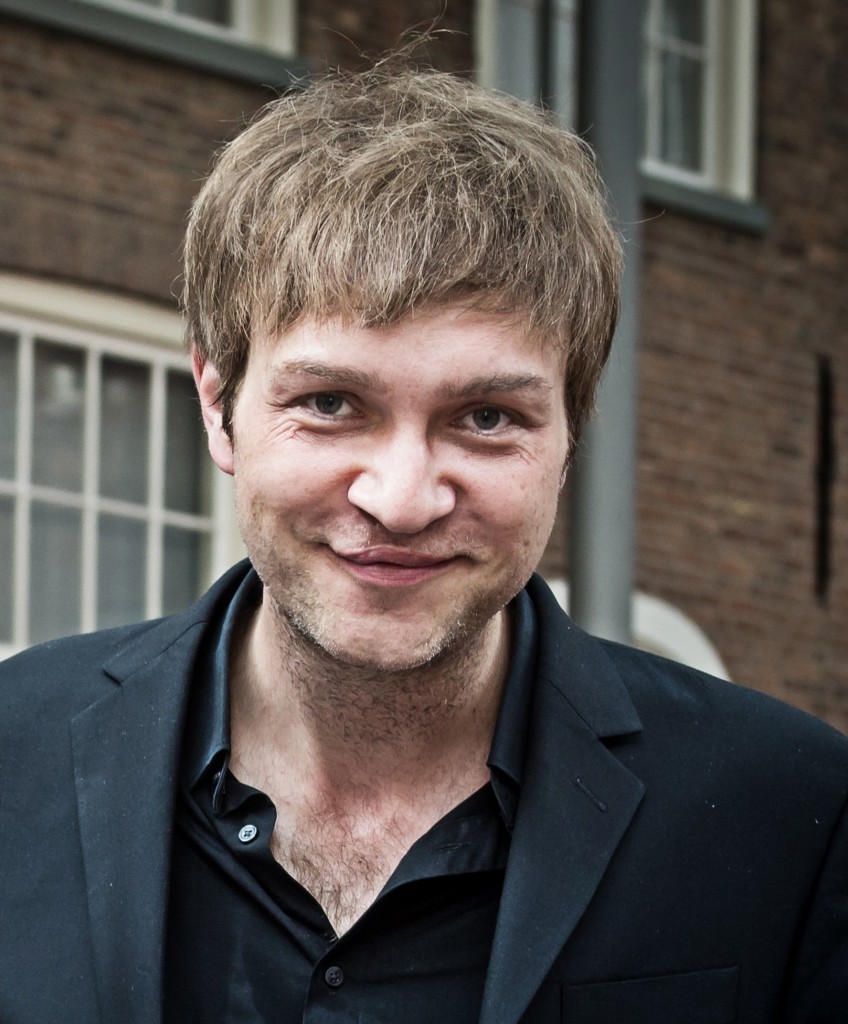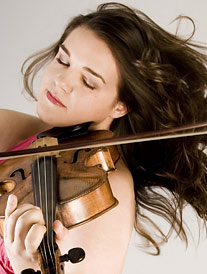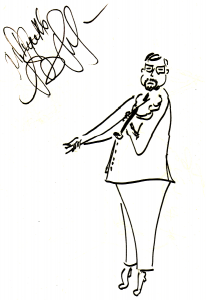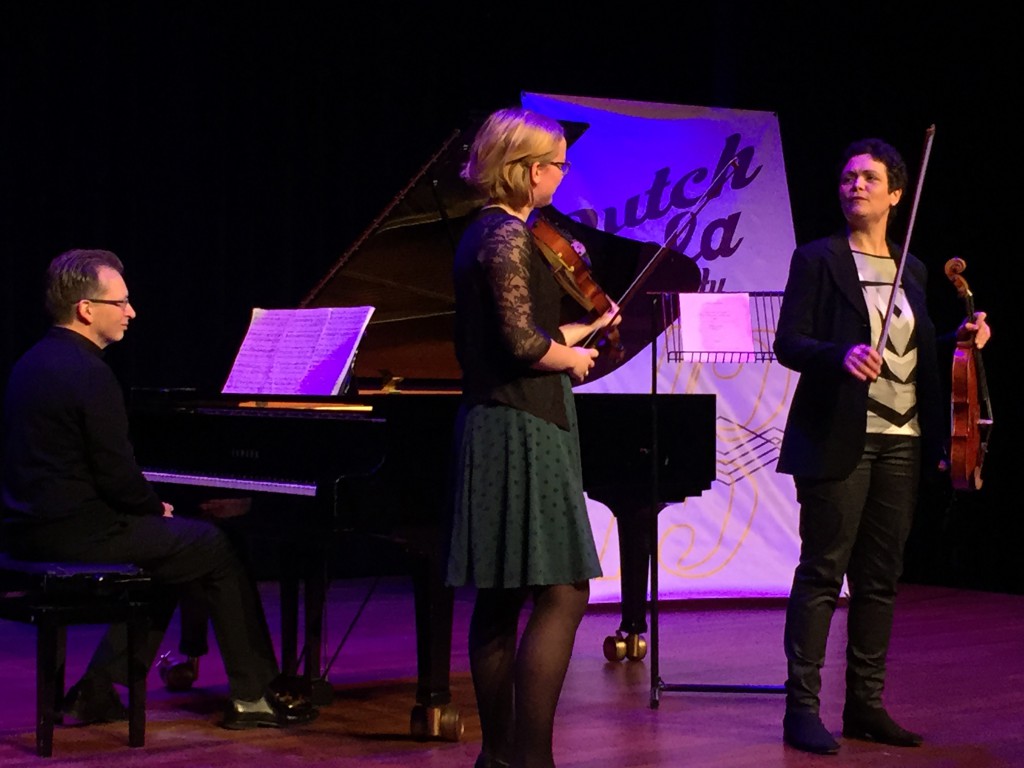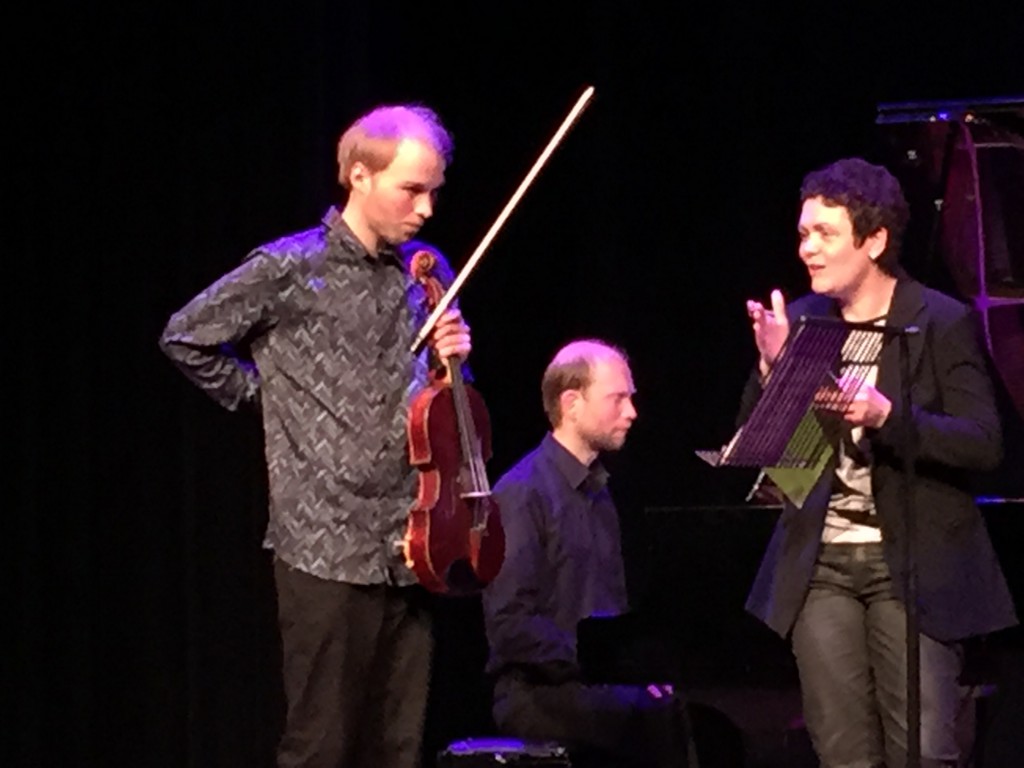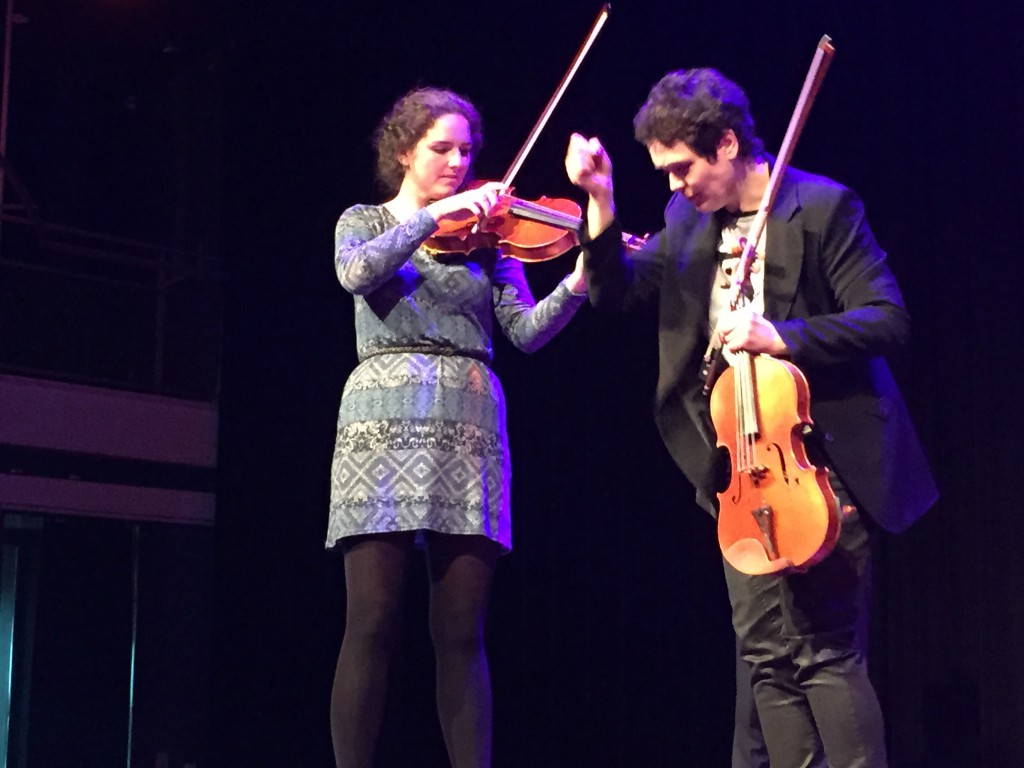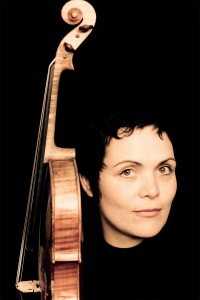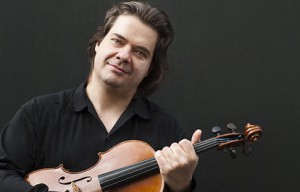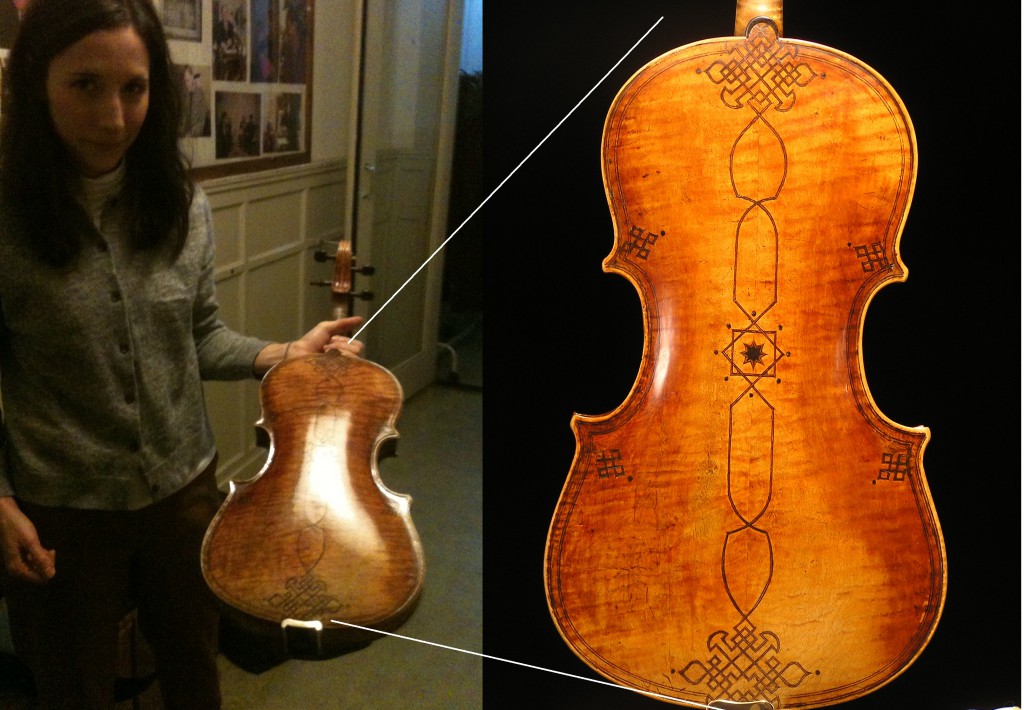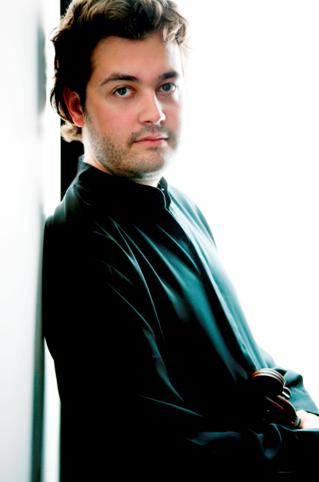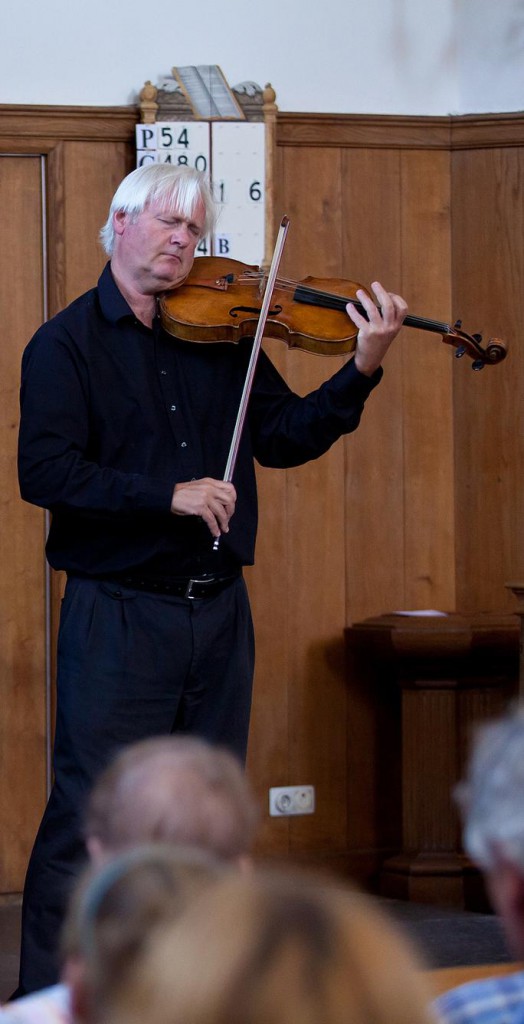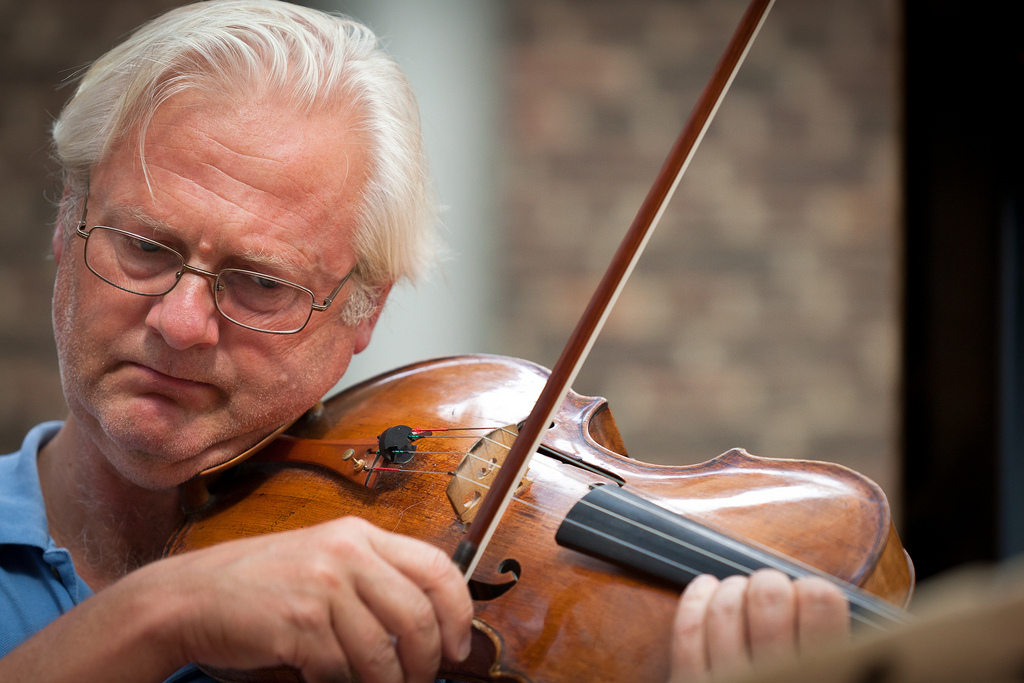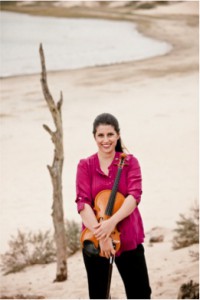It’s that time of year again, when the Delft Chamber Music Festival (DCMF) descends upon us as a small musical paradise. And where there’s chamber music, viola players are sure to be part of the action. In this 2015 edition, artistic leader Liza Ferschtman has invited two very special violists, Jennifer Stumm and Nils Mönkemeyer. The DVS reporter was fortunate to meet up with both of them for a chat about chamber music, viola, and viola advocacy.
by Kristofer G. Skaug
DVS: Nils Mönkemeyer, welcome in Delft – your first time, I believe?
Mönkemeyer: I was very excited to come here, because I met Liza (Ferschtman, ed.) at the Lockenhaus festival (Austria); I liked her instantly, I think she’s a phenomenal musician. Besides, many of my friends came here regularly in the past.
DVS: And Jennifer Stumm, you are a regular at this festival. What keeps you coming back?
Stumm: Liza and I are really old friends, we’ve known each other for 17 years. Apart from the really charming and beautiful old city, this festival has a reputation of having a certain kind of very intelligent and sensitive musicians; so the concerts here are such a pleasure to play. We really work, it’s a process, and I walk away from a concert thinking something quite special happened. It’s really an extraordinary festival!
Mönkemeyer: Judging from the short time that I’ve been here, it really feels like everyone could play with everyone, and it would work. That’s very special.
DVS: You still have relatively limited rehearsal time, does that bring out extra tension in the performance, as if there’s something that still needs to be negotiated on stage?
Stumm: Well, that’s true of any festival. But Delft actually has more rehearsal time than most places. We really do work hard to prepare, which I think brings the most satisfying results.
DVS: Are there any pieces that you are particularly looking forward to perform here?
Mönkemeyer: Well yes, the Brahms (string) quintet on Monday (August 3rd), because that’s the only piece, apart from the Duo recital earlier that same day, where I get to play together with Jennifer.
Stumm: Yes, Monday is really “Viola day”.
Mönkemeyer: Definitely, Monday is going to be really cool. I have to say that I never played a duo concert (with 2 violas) before. I don’t know why. Even in my student days.
DVS: There was a viola quartet here at DCMF, some time back; the Bowen Fantasia, with Isabelle van Keulen and her friends.
Mönkemeyer: Well she is one of the few violinists who can really play the viola.
DVS: Some viola players personify their instrument by e.g. giving it a name. How do you think about your instruments, do you see it as a utility, a household pet or a soulmate?
Stumm: Naming my instrument? No.
Mönkemeyer: Or as in, is the viola male or female?
Stumm: The instrument has such a character of its own, it doesn’t need to be assigned a label. Violas are a character actor in the music, and I want my instrument to be able to do anything, so I wouldn’t want to say “it’s a man, and his name is Herbert!”, because then I would have a hard time asking it to play the part of a really sexy woman, for example.
DVS: In the interest of acoustics and ergonomics, luthiers have experimented with innovative viola designs, leading to some pretty strange shapes. Have you tried one of these instruments?
Stumm: Occasionally I’ve had the opportunity to try such instruments, although not in all seriousness. I don’t really look at the viola as if it’s lacking something. Of course every instrument has its pluses and minuses, but I don’t feel that the viola has anything to be ashamed of. In fact to me this is what gives the viola its character, what I love about it: The fact that it is so changeable, and that it could be either male or female, because the instrument itself is not acoustically perfect.
Also because violas are physically so diverse means that with your personal physical characteristics you have to find the instrument that’s right for you.
Mönkemeyer: I think that is very particular for viola players. The size, the set-up of the instrument can be so different. An instrument that my student is playing sounds good, until I try, and then it sounds terrible. My own viola is reasonably big, but it’s quite difficult to make it sound well. I have to work hard for the right sound, but I like that. Others prefer their instrument to sound smooth and soft right away. Violas can be so different!
DVS: What are your favourite “unknown viola pieces”, deserving of more public recognition?
Mönkemeyer: I have recently recorded a CD with Spanish baroque repertoire, for example a viola sonata by Gaetano Brunetti, he was a Spanish viola and violin player from the Boccherini era. There were 12 sonatas which were written as mandatory audition pieces for the orchestra. I hadn’t thought that I would take to this music, but it’s gorgeous.
Stumm: I’d like to mention the music of Alessandro Rolla, which I recorded. For example some of his sonatas, and the duet for viola with violin accompaniment :-). There’s so much undiscovered early repertoire, but people just don’t dig very hard.
DVS: But then again, violists are probably the only musicians who think of Hindemith as ‘mainstream’…
DVS: Have you had any exposure to the Viola Societies in your home countries?
Stumm: Sure, the American Viola Society is very big, and also sponsors the Primrose competition, which I won; so I actually owe them a lot. They’re really dedicated people, working hard to give young violists opportunities, they have a big national convention where I played a few times. And also in the UK where I live now, there’s a thriving Viola Society.
Mönkemeyer: Well, the German Viola Society is not as big as the American one, but for me it was very important. I grew up in the countryside, and I didn’t know any other viola players at all. So I always looked forward to the monthly newsletter from the Viola Society, which arrived by ‘snail mail’, and I could read about concerts with Yuri Bashmet, Kim Kashkashian and so on; It also provided a way to order viola sheet music which was difficult to get by. So for me it was the only link I had to other viola players, when I was younger. Only after I joined the German Youth Orchestra did I realize how many other violists there were around!
DVS: Do you see any missed opportunities that Viola Societies have failed to pick up on, where more priority should be given, in order to have a bigger impact?
Stumm: I’m going to say something very controversial now: I dream of the day when we don’t need Viola Societies! They are important now, for the advocacy of the instrument. But in the future – well, we’re on our way. I mean, how many violin societies do you know? And why is that? Well, maybe they’d only be having fights… 🙂
Mönkemeyer: But maybe the “nerd factor” of such a club is also holding violinists back. Violists are less worried about that, they’re more like Star Trek fans…
Stumm: But really I do hope so much that the viola will keep climbing until it’s no longer a niche instrument; and that major composers are writing repertoire for us, which is to me a key indicator of where the profession is going. There is a growing number of violists who never played the violin.
Mönkemeyer: That’s a very important thing; many music schools don’t offer a good viola teacher. If you want to start playing the viola you pretty much have got to go to a violin teacher initially, who may not know exactly how to approach viola training. That’s one area where the Viola Societies can make a big difference, by providing teaching materials, courses for would-be viola instructors, and so on. This could be key to get more young viola players. Again this is my countryside upbringing speaking.
Stumm: Anyway, advocacy seems to be a natural part of a viola player’s life.
DVS: What are your most exciting plans for the coming year?
Stumm: A few years back I did a (TEDx) talk about the viola, concerning its physics and the way it is in a way acoustically imperfect, and how that creates the character of the instrument. So I’ve developed a concert program around that, which I’ll be on tour with toward the end of next season, starting in May in Berlin.
Mönkemeyer: So what are you going to play there?
Stumm: It’s a mix of viola solo works and chamber music; as the basis I have two viola quintets, the Mozart g minor and the Brahms G major. And then I’ll be playing some of the Ligety sonata, the Brahms songs, and then George Benjamin’s “Viola, Viola”.
DVS: Are you coming anywhere near here (Netherlands)?
Stumm: No, not next season. But maybe the season after.
Mönkemeyer: This summer I have my own 3-day viola festival within the Festspiele Mecklenburg-Vorpommern, with four concerts every day! Chamber music, concertos, and more. My students are performing there as well. And in The Netherlands, I go on tour with Liza (Ferschtman) next season, we play in Amsterdam (Concertgebouw), Eindhoven and many other places.
DVS: Thank-you so much for your time, looking forward to see (and hear) you in the concert hall!
——-
The Delft Chamber Music Festival has a packed programme, starting this weekend and lasting until August 9th. Among the highlights (for viola fans) worth noting:
- Monday Aug 3rd: Stoelendansconcert Midden-Delfland, 13:00h
with Viola duos by Stumm/Mönkemeyer - Monday Aug 3rd: Concert in Maasland, 18:00h
with Brahms string quintet, op.111 (with 2 violas: Stumm/Mönkemeyer) - Wednesday Aug 5th : Jong Talent Dag, 15:00h
with young violist Dana Zemtsov and pianist Mariam Batsashvili - Sunday Aug 9th: Behagen en/of Prikkelen, 14:15h
featuring Marc Desmons (viola) in the Dvorak Piano quintet. - Sunday Aug 9th: Denken en Gevoelen, 20:15h (festival closing concert)
with Marc Desmons in the rarely heard cello quintet by Gyorgy Catoire (!)

